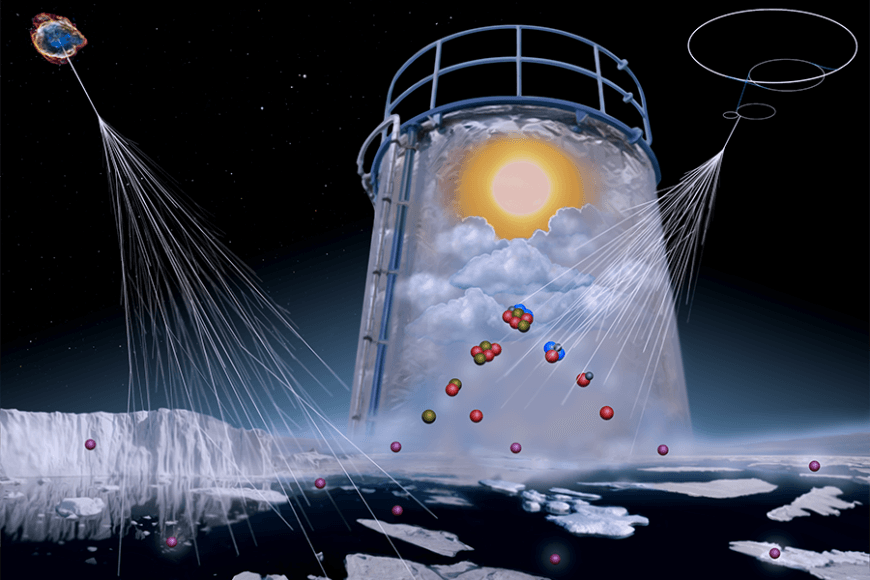Iodine oxoacids formed in oceans have major impact on climate

Iodine-containing vapors that are emitted from oceans are a major source of aerosol particles. “Despite their importance to the climate, the formation of marine particles has been poorly understood,” says Siddharth Iyer, Postdoctoral Researcher in Aerosol Physics Laboratory at Tampere University.
In this research, the formation of aerosol particles form from iodine-containing vapours under marine boundary layer conditions were studied. The experiments were carried out in the ultra-clean CLOUD chamber in CERN, where the nucleation and growth rates as well as the composition of freshly formed particles from iodic oxoacids (iodic acid and iodous acid) were measured.
These vapours derive from photolysis and oxidation of molecular iodine, for which the ocean surface is a major source. The conversion to iodine oxoacids were found to be extremely fast, even under weak daylight conditions. Although iodic acid was identified as the key vapour, a related species – iodous acid – was also found to play an important stabilizing role in the initial steps of neutral (uncharged) particle formation.
“Sulfuric acid is known to be key player in new particle formation, but our results indicate that iodine oxoacid particle formation can compete with sulfuric acid in pristine regions of the atmosphere. This significantly advances our understanding of aerosol formation,” Iyer sums up.
The article Role of iodine oxoacids in atmospheric aerosol nucleation was published in Science.
Contact
Siddharth Iyer
+358 41 729 5811
siddharth.parameswaraniyer [at] tuni.fi
Matti Rissanen
+358 45 873 0170
matti.rissanen [at] tuni.fi
Photo: Helen Cawley





